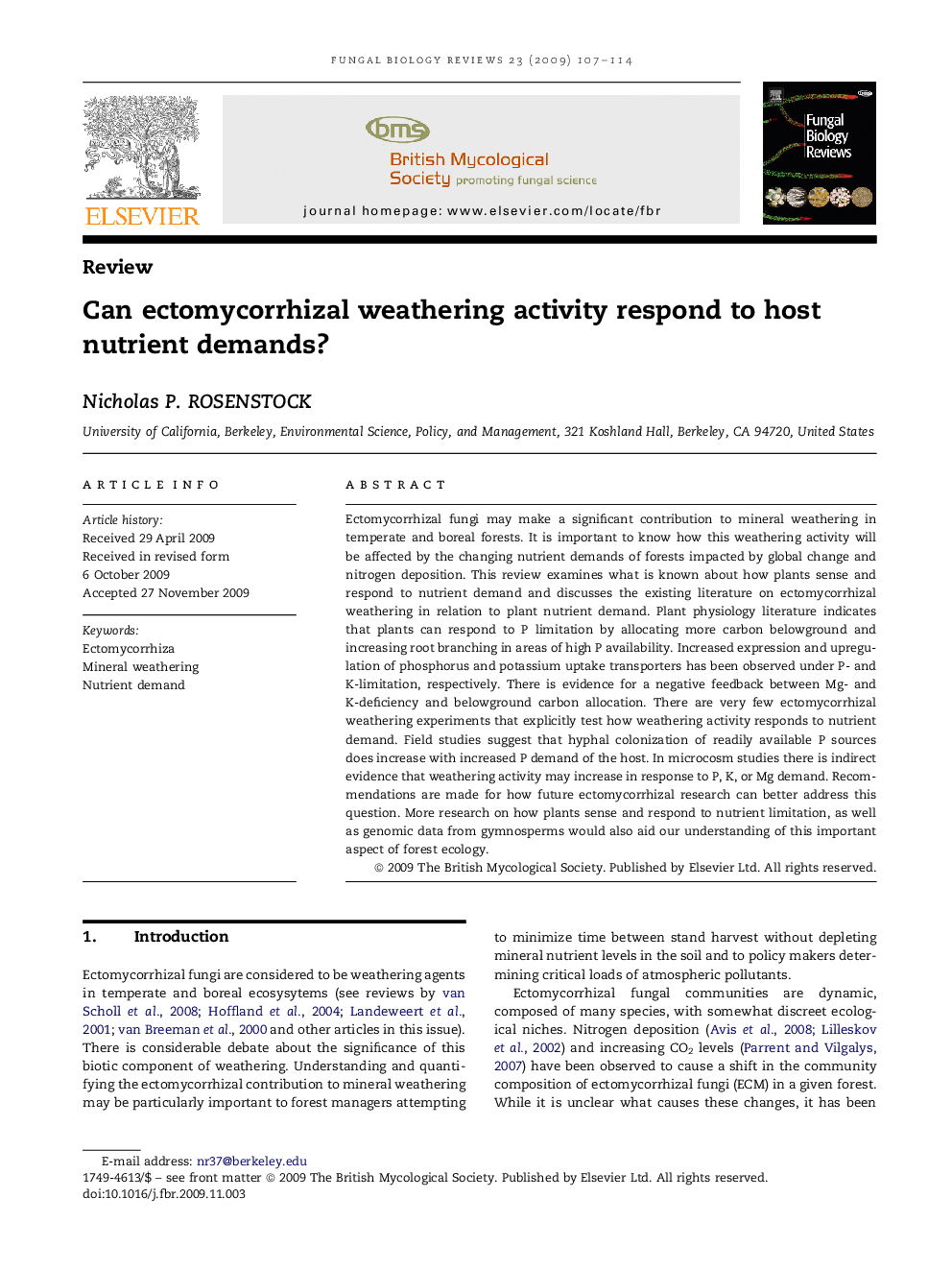| کد مقاله | کد نشریه | سال انتشار | مقاله انگلیسی | نسخه تمام متن |
|---|---|---|---|---|
| 2180624 | 1095190 | 2009 | 8 صفحه PDF | دانلود رایگان |

Ectomycorrhizal fungi may make a significant contribution to mineral weathering in temperate and boreal forests. It is important to know how this weathering activity will be affected by the changing nutrient demands of forests impacted by global change and nitrogen deposition. This review examines what is known about how plants sense and respond to nutrient demand and discusses the existing literature on ectomycorrhizal weathering in relation to plant nutrient demand. Plant physiology literature indicates that plants can respond to P limitation by allocating more carbon belowground and increasing root branching in areas of high P availability. Increased expression and upregulation of phosphorus and potassium uptake transporters has been observed under P- and K-limitation, respectively. There is evidence for a negative feedback between Mg- and K-deficiency and belowground carbon allocation. There are very few ectomycorrhizal weathering experiments that explicitly test how weathering activity responds to nutrient demand. Field studies suggest that hyphal colonization of readily available P sources does increase with increased P demand of the host. In microcosm studies there is indirect evidence that weathering activity may increase in response to P, K, or Mg demand. Recommendations are made for how future ectomycorrhizal research can better address this question. More research on how plants sense and respond to nutrient limitation, as well as genomic data from gymnosperms would also aid our understanding of this important aspect of forest ecology.
Journal: Fungal Biology Reviews - Volume 23, Issue 4, November 2009, Pages 107–114